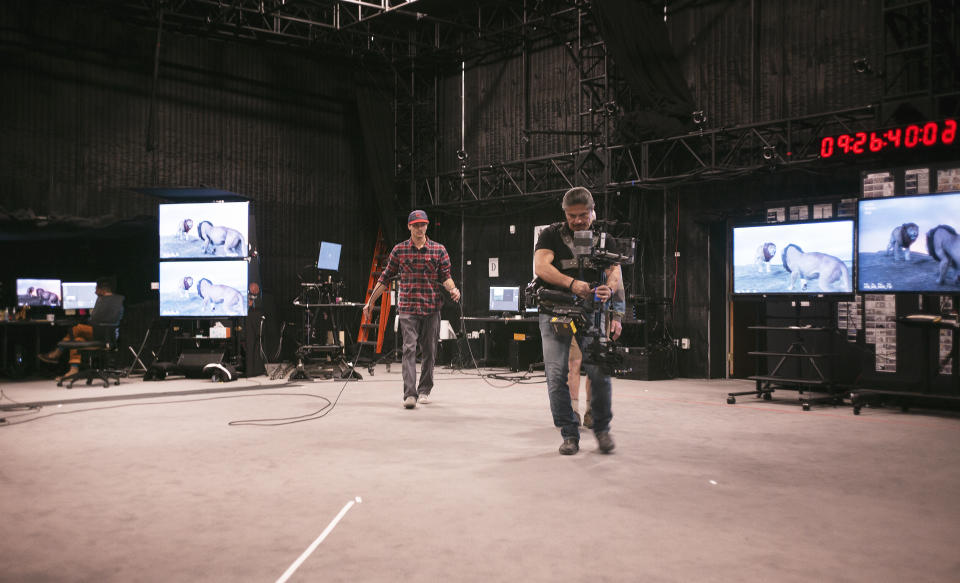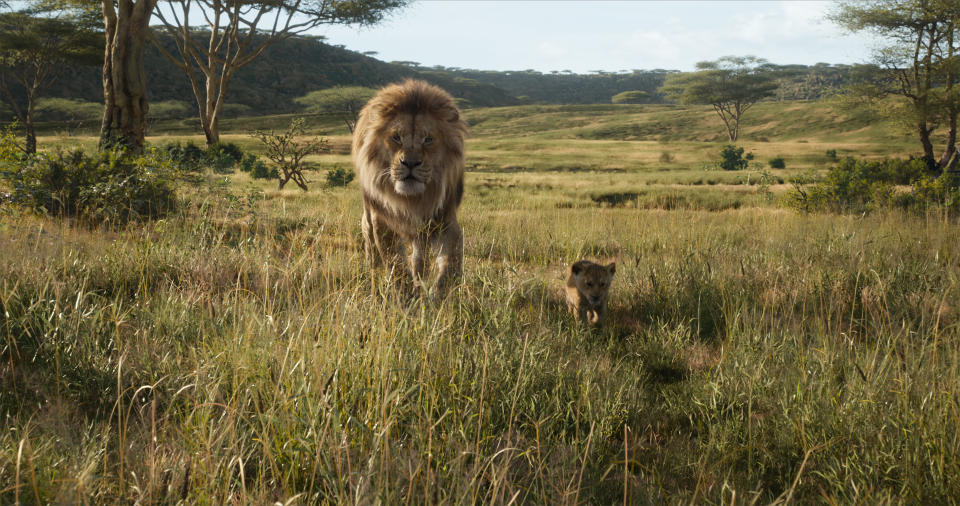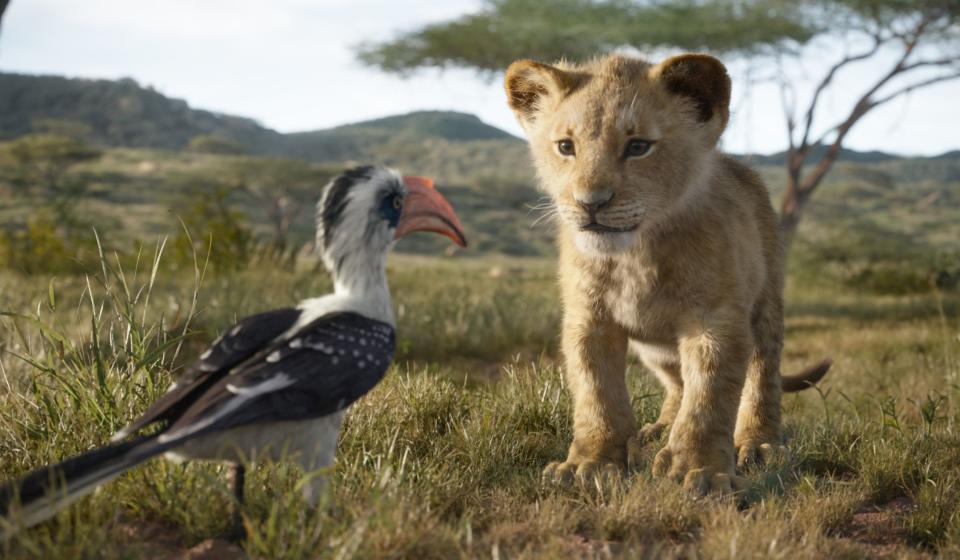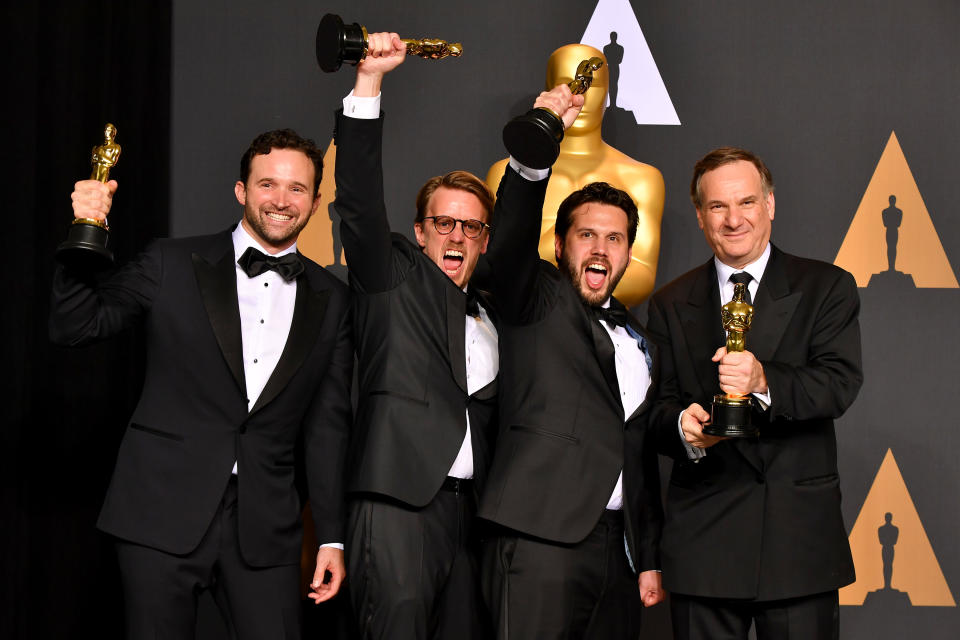'The Lion King' VFX supervisor Adam Valdez reveals the most complex CGI work in the film

The Lion King is on track to make another billion dollars - if not more - for Disney.
Marrying the timeless story of the 1994 animation to state of the art CGI technology, director Jon Favreau taps into our nostalgia for the classic Disney adventure, while pushing the boundaries of photoreal VFX to create a truly unique filmgoing experience.
Taking what he - and London-based VFX house MPC - learned from making 2016’s The Jungle Book to another level, The Lion King is already the favourite to win the Best VFX Oscar at next year’s Academy Awards.
We caught up with its VFX supervisor Adam Valdez to take a deep dive into how the film was made, how it differed to Jungle Book, and the scenes and characters that proved the most difficult to achieve on screen....
Watch the video interview below...
Yahoo Movies UK: What specific challenges did The Lion King pose that you hadn't faced on The Jungle Book?
Adam Valdez: I would say the two biggest differences between Jungle Book and The Lion King, first of all, [is that] we had no little boy or other human actors to kind of build a film around [on Lion King].
Read more: Lion King VFX supervisor settles ‘animated vs live action’ debate
And this time it was fully animated feature for MPC. It's a studio that's been doing incredible animation work for years, but this is sort of a crescendo moment for a talented team.

And the other one was, we had to recreate Kenya to the horizon. And that's not something I think many people have done before: to take something this much size and scope and represented on the screen, in a way where you really believe it.
Did you go to Kenya to nail how it looks on camera?
Yeah, we spent almost two weeks in Kenya travelling the length and breadth of the country really seeing an incredible array of different landscapes and ecosystems that were brought into the film.
Use the slider below to see how the VFX evolved through production...
And so when we came home we really were so moved by the experience. It's big sky country. It's just incredible. And so you realise what the real world has to offer the film.
And part of the mission was to sort of bring it back and share it with the world as authentically as we could.
And is there anywhere within the film that is quite accurately mapped on to Kenya so could you visit where you ‘filmed’ The Lion King?
It's more of a mash up of influences, I would say. Masai Mara is clearly one of these amazing, stretches of green where cheetahs and lions are out there every day doing their thing. And that's where you see some pretty impressive sights. But also the south, southeast hills around Mount Kilimanjaro, there's some pretty important landscape ingredients that we tapped into.
Read more: Breaking down Hobbs & Shaw’s chase sequence
And Mount Kenya itself for the scenes where Timon and Pumba live in this beautiful, lush, what feels like jungle is actually the high altitudes of Mount Kenya.
You went to great lengths to make the animals look anatomically correct, but how did you decide where to draw the line between looking real and looking animated, particularly in reference to the facial animations when talking?
The characters themselves… I tend to think of it like, the main thing is that you audience can connect with them, right? I mean, if they're too raw nature perhaps, or too roughed up or just sort of uninteresting, they don't have a sort of a little bit of like movie star quality that they have to have, you know?

And if you stylised them too much, you run this other risk, which is that audiences are like, what am I looking at? Is this some weird, human animal mixture that maybe feels kind of unnatural and strange. So you’re really, in a sense, trying to make a special version of an animal that you could really see. And of course, you’re thinking about the original character designs, because they're great.
Read more: Lion King’s only live action shot revealed
And you are trying not to break some of the things that worked from the original film, [as] they're definitely an influence.
Is there a specific scene or moment or character that proved the most difficult to nail?

We actually found the little cubs to be quite tricky. I initially thought they'd be sort of straightforward, because they're so cute. But actually, the way they move and making it feel like they're really doing the actions they were doing, in an adventure, and lighting soft, fluffy things, so they look real, but sort of appealing, was quite tricky, to get the balance right. So they took the most sort of care.
Scar went really easily. I thought he sort of fell into place and was kind of dramatic looking and kind of fit his part. It’s sort of ironic what took the most work.
You've worked on Oscar winning films before. If this was the film was up for Oscars - animation or visual effects - where do you think it's going to fall?

I don't know, I try to tune the awards thing out of my mind at all times. The fact that these are categories at all is a little silly these days, given the flux of how things are created.
I'm not lying when I say I honestly just hope the movie works for people. But I think it's fascinating that even the public or at least the sort of internet layer of our society is kind of interested in what do you call these things?
Read more: Joker tipped for Oscar glory
Because, clearly, entertainment is changing and how we consume it, how we relate to it. And what we accept, you know, from different genres and forms is very plastic right now. I think that's actually just ultimately exciting for what audiences are willing and ready to engage with.
The Lion King is in cinemas now.

 Yahoo Movies
Yahoo Movies 
